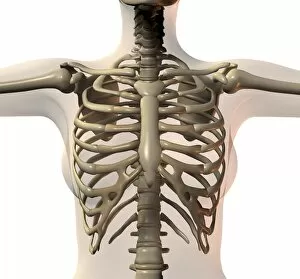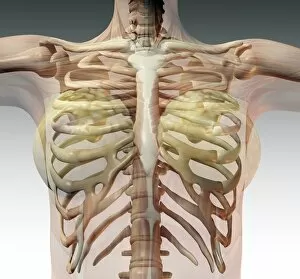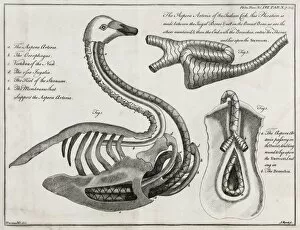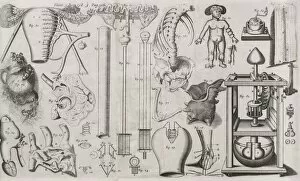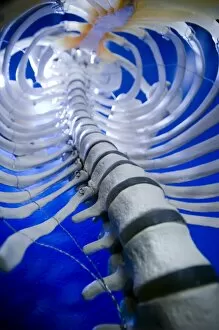Sternum Collection (page 17)
The sternum, also known as the breastbone, is a vital component of various organisms' anatomical structures
For sale as Licensed Images
Choose your image, Select your licence and Download the media
The sternum, also known as the breastbone, is a vital component of various organisms' anatomical structures. In the Honey Bee (Apis mellifera), this bone serves as an attachment site for powerful flight muscles. When examining its internal anatomy through a cross-section, one can observe how it interacts with surrounding organs such as the neck and throat. Dating back to 1866, an engraving showcases the intricate details of the neck and throat anatomy in humans. This illustration highlights how the sternum plays a crucial role in supporting these essential body parts. Furthermore, when exploring a human body's internal systems like the nervous system, lymphatic system, and circulatory system, we realize that they rely on the sternum's stability. It acts as an anchor point for these interconnected networks. Interestingly enough, even extinct creatures like Rodrigues possess remnants of their cranium and sternum. These skeletal remains provide valuable insights into their past lives and evolutionary history. In humans specifically, viewing our skeletal system from different angles reveals how prominent and significant the sternum truly is. From a front view perspective or midsection view showcasing internal organs – it becomes evident that this bone acts as a protective shield for delicate structures within our bodies. Not limited to just humans but extending to other species too; take eagles for example - their skeleton includes a well-defined sternum which aids in flight by providing support to powerful wing muscles. However, despite its strength and importance in various organisms' bodies – injuries related to pectoralis major tear syndrome can occur where there may be complete rupture of this muscle due to excessive strain or trauma. Microscopic muscle fiber tears are common symptoms leading up to such severe conditions. Ultimately though rare but possible - complete rupture of pectoralis major tendon from humerus can happen if not treated promptly or properly managed after initial injury occurs. Thus highlighting why understanding both external appearances and internal functions of bones like sternum is crucial for overall well-being.

